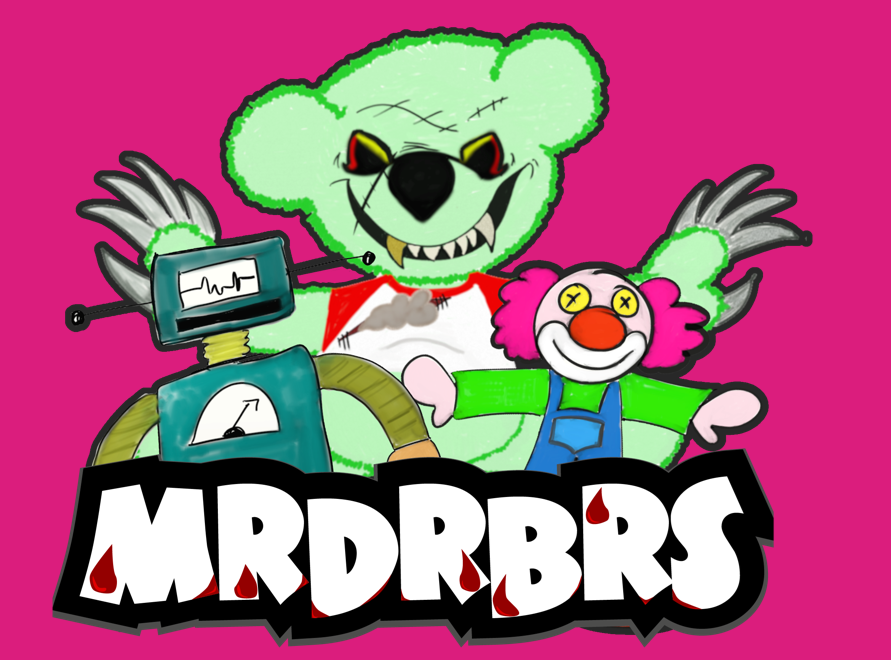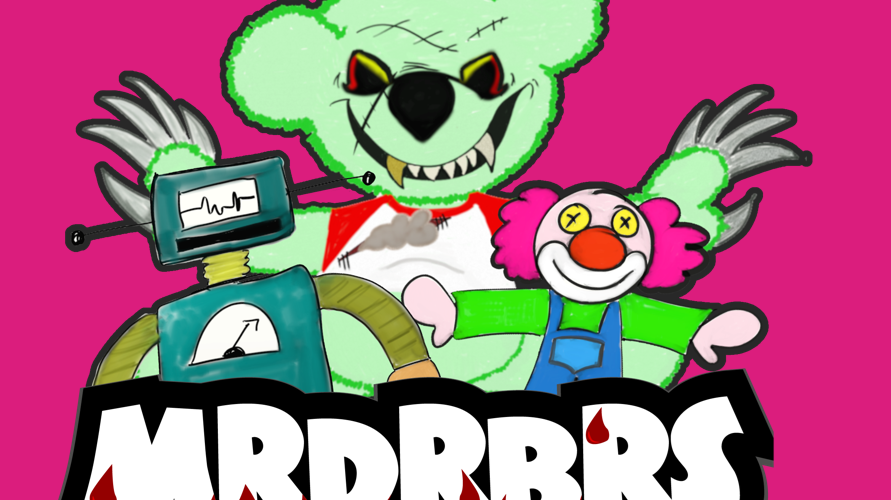As we continue refining our approach in the game development industry, we’ve learned that pitching to game publishers is a completely different game compared to pitching to investors.

Last week at the Alberta Game Series, as part of Bow Valley College’s Indie Ignition Accelerator program, we—along with four other studios—had the opportunity to receive feedback on our pitch deck from a game publisher’s perspective. As soon as I heard about the opportunity, I jumped at it. I’ve been working relentlessly to refine my pitching skills, and this was a chance to really push them to the next level.
After delivering our “MRDRBRS” pitch, the publisher went through our slides, offering detailed feedback—what worked, what didn’t, where we could tighten things up. This was pretty standard. But at the end of the session, I asked something I thought would clarify my priorities:
“If I only have three minutes to pitch, which slides should I prioritize?”
They paused, looking a bit confused before replying, “Three minutes? You’ll have 30.”
That moment made me realize I’d been framing the entire pitch like I would for investors—compressing everything into as short a window as possible. But publishers don’t work that way. They want to explore the game, not just get a quick rundown. That’s when it hit me: we were pitching it wrong.
That shift in perspective changed how we approached pitching to publishers. If, like us, you’ve been focused on investor pitches, here are the key differences we’ve learned along the way.
Key Differences When Pitching to Game Publishers vs. Investors
When pitching to game publishers, always remember: the game comes first.
Generally speaking, for investors, you lead with the product and build confidence that the investor will make 10x their money back, so it’s business-focused. But for publishers? The game is the star. One key aspect when pitching to game publishers is focusing on gameplay and player experience, rather than just business details.
When pitching to game publishers, it’s critical to dive into the gameplay and the player experience. Publishers want to dive into the gameplay, the vision, and what makes it fun for players. The business details can wait.
In our original deck, we had just 10 slides. The publisher made it clear that this was too short for a game pitch. They expected more detail covering the unique selling points (USPs), gameplay, and player motivations. Publishers are creatives themselves; they want to know what the game feels like, what drives the player to keep going, and why they’ll want to play to the end.
As a result, they advised us to create a 15-20 slide deck that includes:
- Core features and selling points
- Several slides focused on gameplay mechanics
- A few slides dedicated to the story and world-building
- Art and color palette integrated into every slide for consistency and impact
The feedback was clear: lead with the game. Build excitement from the very first slide and keep that momentum going. Let the game’s mechanics, core loop, and visuals shine before diving into business plans or team credentials.
- Tip: Think of your pitch deck as telling a story. Get the publisher excited about the game first. The business side and team should come in later—show that you’ve done the work, but don’t lead with it.
Additionally, when pitching to game publishers, keep it simple and accessible.
Admittedly, I’ve never sent a pitch to an investor, only presented to one. But so far it’s been a straightforward transaction— present concisely and be prepared. Since the pitch format is different, Publishers want simplicity and ease of access. That’s why Google Slides is often the best choice. We learned that sending a PowerPoint through email created unnecessary friction—publishers prefer the ease of clicking a link and accessing everything without hassle.
I’ll admit, we were warned. Before the Pitch Feedback Session, we were told, “Bring your laptop, and make sure your pitch deck works both online and offline. It’s common to end up in a room without internet at the worst possible moment.” I didn’t give it much thought—everything’s accessible these days, right? But then there’s YouTube. Yeah, that definitely needs an internet connection.
Initially, we linked to a YouTube video in our deck, but the publisher recommended embedding it directly so it could play locally. It might seem like a small thing, but technical hiccups in a pitch can derail the flow.
- Tip: Use Google Slides for easy access, and always embed your videos locally to avoid any interruptions. The smoother the presentation, the more focused they’ll be on the content.
Finally, when pitching to game publishers, you have more time—so make the most of it.
One of the biggest realizations for me was the difference in timing. For investors, we were once told, your goal is to buy yourself more time. Your first 15 seconds? Be interesting, don’t suck. Because 15 seconds buys you 1 minute; 1 minute buys you 5 minutes; and 5 minutes buy you 10. Each milestone earns you more time, but you have to keep them hooked along the way.
For investors, the approach is different. In contrast, when pitching to publishers, you’re typically working within a 30-minute window. It breaks down like this: 5 minutes for niceties and setup, 10 minutes for your actual pitch, and another 10 minutes for Q&A. Also, plan for 25 minutes instead of 30—you might not get the full time.
At events like GDC, you can even book dedicated sessions to walk through your pitch with a publisher, allowing for a more collaborative and comprehensive discussion.
- Tip: Don’t rush it. Prepare for a longer conversation, but plan for 25 minutes, keeping time for a full sense of the game’s mechanics, narrative, and market position.
The Central Source of Truth: Your GDD
If there’s one key to navigating pitches, whether for investors or publishers, it’s your Game Design Document (GDD). So make it good and make it all encompassing. It’s your ultimate reference point, containing everything about the game in one place. This allows you to customize your pitch deck based on who you’re presenting to. You can pull the right data, adapt the messaging, and ensure the core of your game is clear, no matter who’s in the room.
By keeping your GDD updated, you’re always ready. Have your 1-minute elevator pitch prepared, your 3-minute investor deck polished, and your full-length publisher deck tailored. The GDD is your guide to staying on point and being prepared for any pitch scenario.
- Tip: Treat your GDD as your foundation. Keep it updated and lean on it to shape every pitch, whether you’re giving a short overview or an in-depth presentation to a publisher.
Bonus Tip: Choose A Name That Sticks
One surprising piece of feedback we received during the pitch was about our game’s title. While MRDRBRS had a certain appeal, it quickly became clear that it wasn’t easy to pronounce or immediately obvious in its meaning—especially for non-English speakers. This could be a major barrier when trying to attract a global audience.
So, we took that advice to heart and decided to rename the game Murder Bears. It’s clear, memorable, and packs the punch we want it to.
BUT THEN…. we asked the community, and they some surprising results. But that’s a story for another time 😉
Conclusion
Ultimately, the transition from pitching to investors to pitching to publishers requires a shift in mindset. Investors want sharp, condensed presentations, while publishers are more focused on the depth of the game. But the goal is the same: be prepared, be clear, and be passionate. And always ensure your GDD is your go-to source for keeping everything organized and adaptable.
As we continue refining our pitching approach, these lessons are directly shaping the development and future presentation of Murder Bears. By focusing more on the game’s unique mechanics and immersive storytelling, we’re positioning Murder Bears to stand out in front of publishers and gamers alike.
Curious to see how this feedback will shape Murder Bears? Follow us on LinkedIn and let me know if you’d like to see a more detailed breakdown of the feedback. I’m happy to share what we’ve learned. You can also Sign up for our newsletter to be the first to see our upcoming reveals!
About Us
We’re a Calgary-based studio focusing on virtual reality. We make games and products for VR. Learn more.

